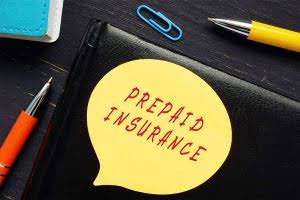Hot Filipino Girl Secrets
July 9, 2024Verify If Shagle Com Is Scam Or Protected
July 9, 2024
So, let’s say we are evaluating the amount of rain during the month of April, which has 30 days. You’ll need the net sales figures from the two financial periods you’re comparing. If you find that sales stagnated over time, you can adjust your future sales strategy to Your business’ profitability. what is the percent of sales method You will learn whether sales rose between two periods and, if so, by how much. If you have a few major clients that comprise most or all of your revenue, you may want to specifically identify the chance of default for each one. Examine how these items change in response to sales variations.
Percentage of sales method example
For example, if a company is small and growing rapidly, its sales data might become out of date much quicker than a more mature business. Once she has the specific accounts she wants to keep tabs on, she has to find how they stack up to her overall sales figures. Well, one of the more popular, efficient ways to approach the situation would be to employ something known as the percent of sales method. Porter’s Auto Parts wants to figure its sales growth for the years ending March 31st, 2017 and March 31st, 2018. One way to change this ratio is by managing levels of sales and costs.
Note all assets and expenses that impacted sales during that period, along with amounts

This analysis reveals which aspects of your business are most sensitive to sales changes. Identify which financial elements to track along with your sales numbers. These elements show how sales affect your business’s finances. This number may seem small, but it’s crucial when you remember that she’s hoping for an increase of sales next month of $1,978.
The benefits of percentage forecasting
This is called your conversion rate, or, simply put, the percentage of sales. The Percentage of Sales method is a marketing technique in which a company sets an objective that it will make 50% of their sales from one particular product. The company can then measure progress by the percentage of sales it makes. Following a few simple steps, you can forecast future revenues and expenses to ensure your business stays on track.

The approach can also be used to forecast some balance sheet items, such as accounts receivable, accounts payable, and inventory. This forecasting method uses estimated overarching sales growth to determine changes to any financial line items that directly correlate to sales. This is commonly done by percentage — if you know the percent amount your sales will increase, you can apply that to all line items as well, both assets and expenses. This includes things like accounts payable, accounts receivable, cash, cost of goods sold (COGS), fixed assets, and net income. Before you can begin tackling your percentage of sales and building accurate estimations for potential investors, you need to know what allowance needs to be set for doubtful accounts. In reality, you could have numerous delinquent accounts and long-term debt impacting your actual cash flow.
It’s a contra-receivable account that reduces the value of your receivables and overall assets. Generally accepted accounting principles require that businesses maintain an allowance for bad debts. That means that estimating uncollectible accounts is a necessary task if you want to produce GAAP financial statements for potential or existing lenders and investors. It helps you understand how much bad debt you currently have, and how much you’ll likely have in the future. This paints a more accurate picture of your company’s financial health — for your sake and the sake of investors.
- Each method is useful for different reasons, so read the following sections carefully to determine which one fits your ship the best.
- Finally, create one-page posts that link to all the listed posts in order from top to bottom and use them as a core marketing strategy.
- A business would need to forecast the accounts receivable or credit sales using the available historical data.
- And Cube’s scenario manager makes it easy to create multiple scenarios and forecasts.
- You may want to compare the percentage of sales to different categories of expenses in addition to total expenses.
- By looking over her records, she finds that for the month, her credit purchases come to $55,000 (with $5,000 cash).
If your sales increase by 20 percent, you can expect your total sales value in the upcoming quarter or year to be $90,000. There are five basic steps to the percentage of sales method formula. We’ll go through each step and then walk through an example to see the formula in action. Now Jim has the percentages, he can estimate his sales for next year, and apply them to each line item to get a rough idea of what each of them will look like. Say for example that Jim believes he can increase company revenue (sales) to $400,000 next year.

Before you start panicking and planning for a ton of debt, it’s important you know which method you should use to determine your allowance for bad debt. Each method is useful for different reasons, so read the following sections carefully to determine which one fits your ship the best. It works by using percentages of your total sales and how much of your total sales are made up of different products and services. By figuring out the percentages, you can create a list of goals that will help you get more sales for different products and services.
How to calculate the percentage of sales formula
- Before you can begin tackling your percentage of sales and building accurate estimations for potential investors, you need to know what allowance needs to be set for doubtful accounts.
- Thus the cost of goods sold percent listed would be 58 percent.
- Under this method, the balance of the allowance for doubtful accounts should be $5,000.
- Joist helps manage sales, streamline operations, and create detailed estimates and invoices.
- Allowance for doubtful accounts appears on your balance sheet right beneath your accounts receivable balance.
- One of your goals as a business owner is to increase your sales percentage to grow your business and stay competitive.
The PS also helps you identify problems in the company’s marketing strategy. For example, if the CGS ratio increased to 65 percent next year, management would have to examine why their production costs are increasing relative to sales. This could happen because of a number of supply issues or environmental changes. Material prices or utility rates could have gone up uncontrollably during the year for example. One of your goals as a business owner is to increase your sales percentage to grow your business and stay competitive. Adopting smart strategies can improve your sales performance and boost your revenue.